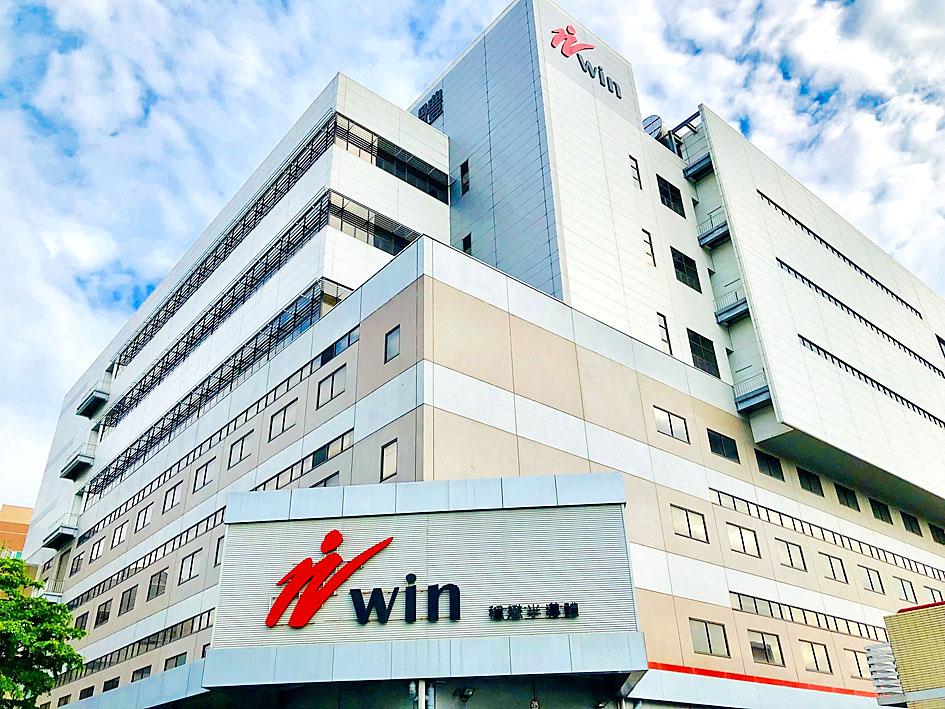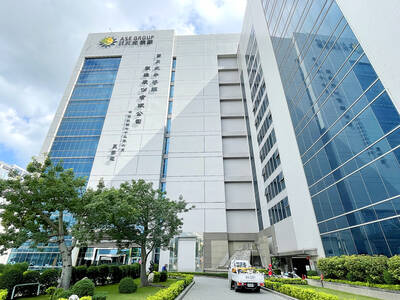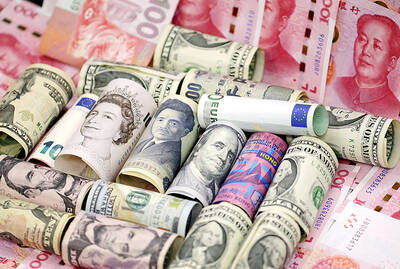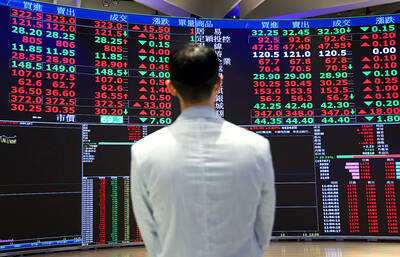Win Semiconductors Corp (穩懋半導體), the world’s largest pure-play gallium arsenide foundry, yesterday said that it expects a 5 percent growth in revenue this quarter from last quarter’s NT$6.57 billion (US$227.29 million) on rising demand for wafers for premium smartphones.
The Taoyuan-based chipmaker produces wafers used in vertical-cavity surface-emitting lasers for Apple Inc’s iPhone 12 series to unlock the smartphones via facial identification, as well as power amplifiers for the company’s first 5G devices.
Demand for Wi-Fi roosters also shows strong momentum due to the remote-working trend, it said.

Photo: Screen grab from Web site of Win Semiconductors Corp
Those growth drivers would offset orders lost in its business with HiSilicon Technologies Co (海思), a semiconductor arm of Huawei Technologies Co (華為), as Win has stopped shipping chips to the Chinese company after export restrictions imposed by the US took effect on Sept. 15.
“Changes concerning a single client will not affect overall revenue,” Win president Steven Chen (陳舜平) told investors in a conference call. “That will only change the share each customer contributes to overall shipments, as long as smartphone demand stays resilient.”
As the chipmaker commands more than 70 percent in the gallium arsenide power amplifier market worldwide, it could quickly fill the void left by HiSilicon, Chen said.
The company is a major or even the sole supplier to most of its Asian clients, he added.
Gross margin for this quarter would plummet to about 38 to 39 percent from 44.8 percent last quarter, as the company is to ship more lower-margin wafers, while shipments of higher-margin products for 5G infrastructure have dropped, Chen said.
Factory utilization would remain at 70 to 80 percent, compared with 75 percent last quarter and 90 percent in the second quarter, due to capacity expansion, he added.
Win has secured a plot for a new plant in Kaohsiung, as it expects strong demand for power amplifiers used in 5G smartphones and compound semiconductors used in 3D sensors, Chen said.
In the three months through last month, the company posted a record-high profit of NT$1.97 billion, up 19 percent from NT$1.65 billion in the previous quarter and 20 percent from NT$1.64 billion a year earlier, thanks to robust demand of 5G infrastructure and Wi-Fi routers amid the work-from-home trend.
Earnings per share were NT$4.68, up from NT$3.94 a quarter earlier and NT$3.9 in the prior year.
The company said that the third quarter used to be the peak season for smartphone sales, but this year many companies have postponed product launches, especially of flagship models, due to COVID-19.
The revenue contribution from technology used in mobile devices dropped to 30 to 35 percent last quarter, down from 35 to 40 percent a year earlier.
The revenue contribution from telecom infrastructure climbed to 25 to 30 percent from 20 to 25 percent a year earlier.

EXPANSION: The investment came as ASE in July told investors it would accelerate capacity growth to mitigate supply issues, and would boost spending by 16 percent ASE Technology Holding Co (ASE, 日月光投控), the world’s biggest chip assembly and testing service provider, yesterday said it is investing NT$17.6 billion (US$578.6 million) to build a new advanced chip packaging facility in Kaohsiung to cope with fast-growing demand from artificial intelligence (AI), high-performance-computing (HPC) and automotive applications. The new fab, called K18B, is to commence operation in the first quarter of 2028, offering chip-on-wafer-on-substrate (CoWoS) chip packaging and final testing services, ASE said in a statement. The fab is to create 2,000 new jobs upon its completion, ASE said. A wide spectrum of system-level chip packaging technologies would be available at

Taiwan’s foreign exchange reserves hit a record high at the end of last month, surpassing the US$600 billion mark for the first time, the central bank said yesterday. Last month, the country’s foreign exchange reserves rose US$5.51 billion from a month earlier to reach US$602.94 billion due to an increase in returns from the central bank’s portfolio management, the movement of other foreign currencies in the portfolio against the US dollar and the bank’s efforts to smooth the volatility of the New Taiwan dollar. Department of Foreign Exchange Director-General Eugene Tsai (蔡炯民)said a rate cut cycle launched by the US Federal Reserve

HEAVYWEIGHT: The TAIEX ended up 382.67 points, with about 280 of those points contributed by TSMC shares alone, which rose 2.56 percent to close at NT$1,400 Shares in Taiwan broke records at the end of yesterday’s session after contract chipmaker Taiwan Semiconductor Manufacturing Co (TSMC, 台積電) hit a fresh closing-high amid enthusiasm toward artificial intelligence (AI) development, dealers said. The TAIEX ended up 382.67 points, or 1.45 percent, at the day’s high of 26,761.06. Turnover totaled NT$463.09 billion (US$15.22 billion). “The local main board has repeatedly hit new closing highs in the past few sessions as investors continued to embrace high hopes about AI applications, taking cues from a strong showing in shares of US-based AI chip designer Nvidia Corp,” Hua Nan Securities Co (華南永昌證券) analyst Kevin Su

Nvidia Corp’s major server production partner Hon Hai Precision Industry Co (鴻海精密) reported 10.99 percent year-on-year growth in quarterly sales, signaling healthy demand for artificial intelligence (AI) infrastructure. Revenue totaled NT$2.06 trillion (US$67.72 billion) in the last quarter, in line with analysts’ projections, a company statement said. On a quarterly basis, revenue was up 14.47 percent. Hon Hai’s businesses cover four primary product segments: cloud and networking, smart consumer electronics, computing, and components and other products. Last quarter, “cloud and networking products delivered strong growth, components and other products demonstrated significant growth, while smart consumer electronics and computing products slightly declined,” compared with the